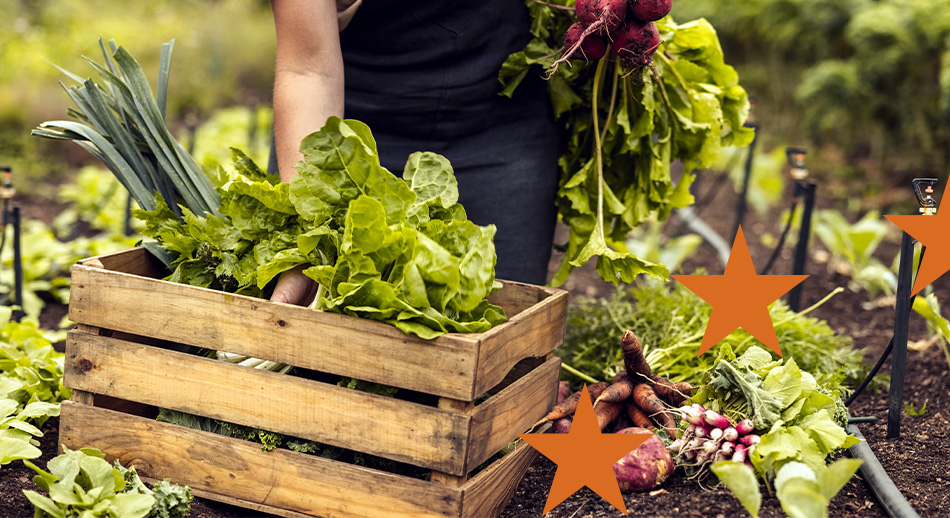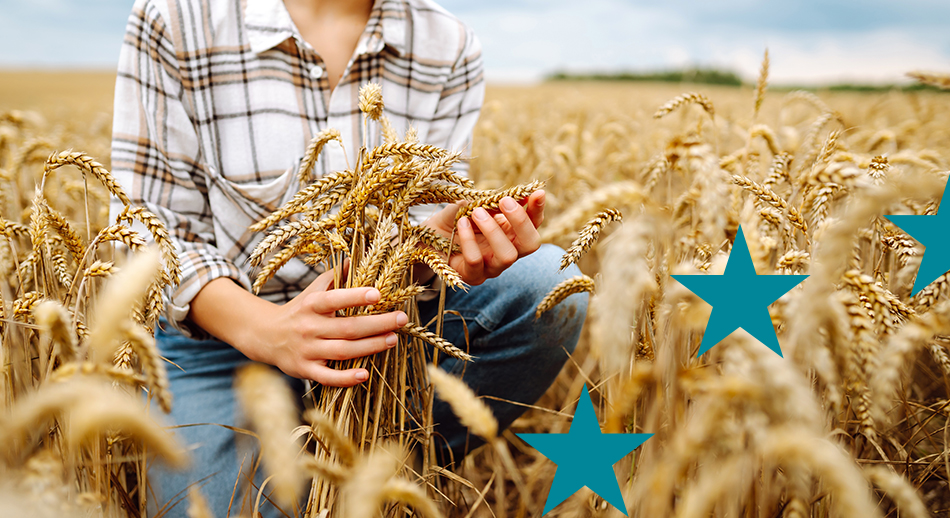The 2021-2027 programming cycle includes many new features on agricultural and rural funds: let’s find out together what they are.
The reasons for the Common Agricultural Policy: food security, environment, vulnerability
The so-called Common Agricultural Policy (CAP) and European funds for agriculture have been a central issue in the EU since their establishment in 1962.
They are associated with many of the EU’s strategic goals: ensuring a certain level of food self-sufficiency in Europe (an issue that is by no means a given, even in light of thecurrent international situation); regulate food price fluctuations (a crucial issue especially for the most vulnerable social groups); safeguard natural resources, the environment and the landscape; protect the health, safety and quality of food; and safeguard the income and jobs of farmers and a wide range of economic activities revolving around agriculture (food industry, tourism, services, other non-food production related to agriculture and forestry).
Specific measures are needed to achieve all these goals, as agricultural production is subject to various vulnerability and uncertainty factors related to climate, natural events, and also economic aspects, which under normal market conditions make farming less profitable and attractive to workers (resulting in the risk of abandonment of the countryside) and more subject to international competition (price competition with products from other countries). These measures were among the first to be adopted at the community level because they intervene directly in the market, which the European institutions aim to keep single and integrated.
Agriculture in Europe: one third of the EU budget and a “hot” topic
On the other hand, the Common Agricultural Policy has been (and is) criticized by many observers, institutions, and organizations because of its distorting effects on the market and the substantial resources it absorbs:
- This short booklet provides an overview of the main criticisms of the CAP and the main reasons in its defense;
- This brief publication provides a quick literature review of the “pros” and “cons” of CAP.
Approximately one third of the EU budget is devoted to the CAP: as we showed in the chapter on European institutions and policies., about one third of the Community budget for this seven-year period is devoted to the CAP (EAFRD and EAGF funds), about one third to the Cohesion Policy (Structural Funds), and about one third to the implementation of the various Community programs.
A proportion that was even higher in the past and is considered excessive by some; but it certainly makes agriculture a “hot” topic for those dealing with European funds.
For this reason, the current edition of the Europlanning Guide includes a specific focus on agricultural and rural funds, the EAFRD and the EAGF , which have special modes of operation compared to other European programs and funds. We advise all interested readers to explore them further on the respective links.
A period of newness: the transition period (2021-2022) and the “New CAP” (2023-2027)
As these are central issues at the European level, The CAP and agricultural support measures are the subject of continuous debate and have experienced various moments of reform: with a view to modernizing the sector (1970), rebalancing supply and demand (1984), providing direct support to farmers (1992), integrating rural development dynamics (1999), and greater integration of environmental and social aspects (2013).
In recent years, a new CAP reform process has been initiated, which has not yet been completed.
As explained in the chapters of the Guide devoted to the EAFRD and the EAGF , we are now (period 2021-2022) in a transitional phase in which the rules of the previous programming cycle are still being applied, pending the entry into force of a “New CAP” from 2023.
The introduction of a “transitional phase” was necessary because of the complexity of the issue and the diversity of views among the different parties involved. Regulations for the “New CAP” were not approved until December 2021, one year after the start of the current programming period. The “New CAP” also requires the formulation of national plans, which form the strategic basis for it. They were presented to the Commission in December 2021, which should have approved them by June 30. On March 31, the commission shared the his comments regarding the Italian Plan (no less than 244 points, outlined in a 40-page document ). It is expected in the coming months to finalize the current draft and its subsequent approval.
What changes with the “New CAP” and the draft National Strategic Plan.
Therefore, the “New CAP” will kick off in January from next year. It will cover the period 2023-2027 and include some major innovations in the use and organization of funds.
First of all, the “New CAP” provides for a single National Strategic Plan of the CAP , which gives consistency and regulates the use of EAFRD and EAGF funds in each country, based on its organizational and territorial specificities. In the case of Italy, as much as the overall programming of agricultural and rural funds will be defined at the national level, regions are expected to maintain a central role in planning and managing specific interventions, as Managing Authorities for the funds in their local organisations.
At a general level, the “New CAP” also includes new objectives, a greater focus on the environment, competitiveness, small producers, simplification and alignment of procedures, social and labor aspects, and sector specificities.We have discussed these in the pages on EAFRD e EAGF and more information can be found in the links offered in the next section.
At the Italian level, the draft strategic plan (more than 1,500 pages long) is summarized in two short presentations, which we identified as quite clear and comprehensive in dealing with, respectively the structure e its contents . We resume its essential numerical terms below.
| AIUTI AL REDDITO | 10.477.775.690 € | 29% |
| Sostegno di base al reddito per la sostenibilità | 8.376.429.375 € | |
| Sostegno ridistributivo complementare al reddito per la sostenibilità | 1.751.121.930 € | |
| Sostegno complementare al reddito per i giovani agricoltori | 350.224.385 € | |
| ECOSCHEMI | 4.377.804.830 € | 12% |
| Benessere animale e riduzione degli antibiotici | 1.816.570.620 € | |
| Inerbimento colture arboree | 777.960.455 € | |
| Olivi di particolare pregio paesaggistico | 751.394.145 € | |
| Sistemi foraggeri estensivi | 814.710.385 € | |
| Misure specifiche per gli impollinatori | 217.169.225 € | |
| SOSTEGNO ACCOPPIATO | 2.626.682.895 € | 7% |
| Zootecnia | 1.092.700.085 € | |
| Colture a superficie | 1.183.758.425 € | |
| Colture proteiche | 350.224.385 € | |
| SVILUPPO RURALE | 14.775.893.476 € | 41% |
| Impegni in materia di ambiente e di clima e altri impegni in materia di gestione | 4.461.529.684 € | |
| Vincoli naturali o altri vincoli territoriali specifici | 1.094.859.903 € | |
| Svantaggi territoriali specifici derivanti da determinati requisiti obbligatori | 74.743.558 € | |
| Investimenti, compresi gli investimenti nell'irrigazione | 4.020.986.053 € | |
| Insediamento dei giovani agricoltori e dei nuovi agricoltori | 948.428.688 € | |
| Strumenti per la gestione del rischio | 2.876.069.969 € | |
| Cooperazione | 1.090.607.910 € | |
| Scambio di conoscenze e la diffusione dell'informazione | 208.667.711 € | |
| AIUTI SETTORIALI | 3.048.197.685 € | 9% |
| ASSISTENZA TECNICA | 350.703.773 € | 1% |
| TOTALE | 35.657.058.349 € | 100% |
We provide below a brief review of the main sources of information to refer to in order to gain a deeper understanding of the European and Italian framework of the CAP and rural funds.
The European and Italian framework of the CAP 2023-2027: the sources of insights
Relative to the European framework, the reference site is that of the European Commission, which provides the following:
- A detail of the 10 objectives Of the “New CAP.” Ensuring a fair income for farmers; increase competitiveness; Improve the position of farmers in the food chain; taking action against climate change; protect the environment; protect landscapes and biodiversity; supporting generational change; vitalize rural areas; Protect food quality and health; fostering knowledge and innovation. Aspects that are measured in a special portal that tracks key indicators for each country ( here the data for Italy ); and which are accompanied by a cross-cutting effort to simplification ;
- An explanation of the main features of the new CAP programming, based on three principles: a greener CAP (environmental objectives and conditionalities, eco-incentives, specific allocations for environmental and climate objectives), a fairer CAP (better distribution and use of income support, social conditionalities, support for young people and gender equality), and a more competitive CAP (improved negotiating opportunities for farmers, market orientation, reserves for crises and leading sectors);
- A even more thorough explanation of the nature and relevance of these changes for farmers and citizens;
- Two publications ( one more thematic , one more quantitative ) concerning the structure of the National Strategic Plans of the CAP; in addition, of course, to the complete list of the National Plans .
In addition, the Council’s dedicated website provides an overview of the history and evolution of the CAP , with an in-depth look at the new features of the “New CAP” 2023-2027 . A perspective that is echoed in a interesting article Robert Schuman Foundation. The site of the European Rural Development Network provides other useful, more operational information, including in particular a section devoted to the CAP post-2020; along with a database of projects, materials useful, possible partners, events And much more.
Relative to the Italian framework, the reference site is that of the National Rural Network . This is evident from the home page, which is packed with all kinds of elements and insights (not only related to European projects) for those involved in rural areas and agriculture. One of the sections is devoted to the CAP 2023-2027 programming. , which provides the following elements:
- A PSN dedicated page , or the CAP National Strategic Plan. Found here are the draft NDP submitted on December 31, 2021, and the comments of the European Commission to the said draft, sent on March 31, 2022 and still being analyzed by national authorities;
- Two sections devoted respectively to “ policy briefs ” and to the SWOT analysis techniques of each of the CAP objectives. These very specific and detailed documents were prepared by the Italian authorities during the preparatory phase of the CAP National Strategic Plan and provide much background information and analysis useful for understanding the Plan’s priorities and the scope of intervention of the Agricultural and Rural Funds. We list the objectives with related documents below:
1 – Ensuring a fair income : Policy Brief | SWOT
2 – Increasing competitiveness : Policy Brief | SWOT
3 – Rebalancing the supply chain : Policy Brief | SWOT
4 – Countering Climate Change : Policy Brief | SWOT
5 – Protecting the Environment : Policy Brief | SWOT
6 – Conserving landscapes and biodiversity : Policy Brief | SWOT + attachments
7 – Supporting generational change : Policy Brief | SWOT
8 – Revitalizing rural areas : Policy Brief | SWOT
9 – Protecting the health and quality of food : Policy Brief | SWOT
AKIS – Knowledge system and digitization : Policy Brief | SWOT
The structural characteristics of the agriculture, agribusiness and forestry sector : Policy Brief
- Three equally interesting but more technical sections devoted respectively to sectoral and thematic insights (which include, among other things, summary fact sheets for the main sectors of the agricultural world), to the strategic path related to the CAP in Europe (with useful additions to what has already been reported in this article) and to the monitoring and evaluation systems of CAP interventions (context databases are available in a separate section).
Still related to the Italian framework of the CAP, we also recommend two interesting publications:
- A Coldiretti publication, funded by the European Union, entitled “ Where the CAP is going – the new CAP 2023-2027 – Italy’s National Strategic Plan. ” (February 2022). A true, clear, in-depth Guide related to this specific area;
- An article clarifying the path of definition of National Strategic Plans in countries where the governance of agricultural and rural funds is regionalized (such as in Italy, through the RDPs of previous programming cycles). A debate that is still ongoing and captures one of the central points of the new features of the “New CAP.”
The “New CAP”: a work site on the move, with more news to come
The CAP covers an important part of European funds, and the “New CAP” is one of the big new features of this new programming period. A novelty that has not yet had a chance to manifest itself (we are still in the so-called “transitional phase”) but which we will see at work very soon: in the coming months the National Strategic Plan will be finalized and from next year a renewed system for managing EAFRD and EAGF funds will come into force. A system in which practitioners will continue to recognize familiar stakeholders, priorities and forms of action, alongside new and renewed goals, processes and modes of action.
We will continue to keep you updated on upcoming developments.




